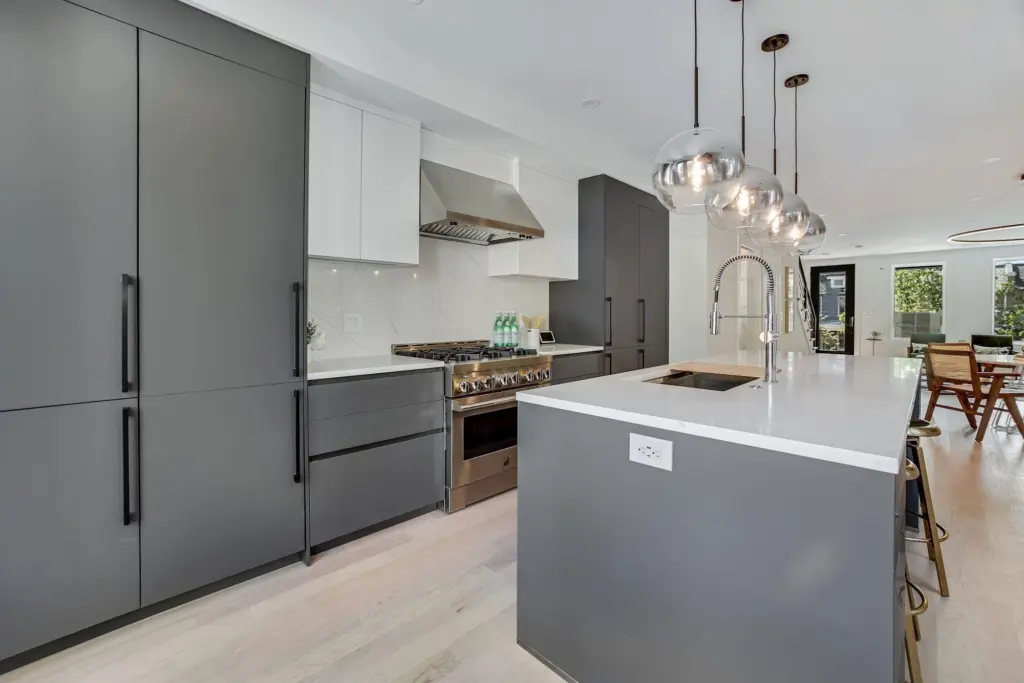Undertaking a kitchen remodeling is an endeavor filled with choices, contemplation, and careful planning. It’s a process that demands attention to detail, creativity, and well-informed decisions to transform the heart of your home into an ideal space that seamlessly blends functionality with aesthetics.
Whether you’re aiming for a more modern look, seeking to expand your kitchen’s footprint, or simply looking to enhance its usability, this comprehensive guide serves as your roadmap, illuminating every step necessary to bring your dream kitchen to life.
In the sections that follow, we’ll delve deep into critical areas, from planning the design and layout of your new kitchen to selecting and hiring dependable contractors. Our aim isn’t just to provide information but to instill confidence as you embark on this transformative journey.
So, with a steady hand on the helm, let’s navigate through these well-charted territories and discover the unique sense of belonging you can create within your newly renovated space.
Design and Layout Planning
Embarking on the design and layout planning of your kitchen remodeling calls for meticulous attention to detail. It’s about crafting an efficient, visually pleasing space that exudes warmth and hospitality. You’ll need to evaluate existing spatial structures, including floor areas, wall spaces, doorways, and windows, to make the most of what you have. Understanding the size and proportions of these elements will guide decisions on where to place key components like cabinets, appliances, counters, and islands.
Next, consider the workflow within your kitchen area. You want to maintain a harmonious flow between storage areas, cooking ranges, refrigerators, and sinks – a concept often referred to as ‘the golden triangle’ in kitchen design.
Now, dive deeper by considering how these spatial factors align with your personal preferences and functional needs. For example, think about the storage solutions you desire, the amount of counter space needed for food preparation, and any specific requirements for appliance placement based on your cooking habits or dietary needs. These questions refine your initial layout plan into one that not only looks great but also suits your lifestyle. Additionally, contemplate aesthetic aspects such as color schemes, materials for surfaces (like countertops), and lighting arrangements, as they greatly contribute to creating a comforting ambiance in your culinary haven.
To solidify all these considerations, you’ll need to create a concrete plan, often through careful sketching or digital modeling, which provides precise measurements along with visual representation. This step helps identify potential challenges or opportunities in implementing your ideas effectively. It also allows you to experiment with different combinations until you find the optimal balance between a functional layout and visually appealing aesthetics, without prematurely concluding the discussion.
The final blueprint becomes your roadmap, guiding every subsequent decision during the actual renovation process. It ensures that the end result resonates with your innate desire for a warm, welcoming kitchen.
Selecting and Hiring Contractors
The importance of carefully selecting and hiring reliable contractors for your kitchen renovation cannot be overstated. According to a 2020 report by HomeAdvisor, the average cost of professional kitchen remodels was approximately $45,000, highlighting the significance of this investment.
Your search for contractors often begins by gathering names from various sources, including online reviews, recommendations from friends or family who have undergone similar renovations, local home improvement stores, or trade associations.
Once you’ve narrowed down your list based on factors such as experience in kitchen renovations, licensing, and insurance, it’s crucial to request detailed proposals. These proposals should outline the scope of work, estimated costs, and timelines, helping you make informed decisions that align with your renovation goals.
While cost is a significant factor, it shouldn’t be the sole determinant. Quality craftsmanship is pivotal in achieving longevity and functionality in kitchen renovations. Therefore, evaluating past work samples or visiting completed projects provides insights into a contractor’s skill level and attention to detail. Conducting interviews also allows you to assess communication styles and determine whether you’re comfortable entrusting your vision to specific individuals or teams.
Selecting the right contractor isn’t the end of the process – establishing clear communication channels throughout the project is vital. Regular updates on progress against initial timelines help manage expectations, reducing the chances of misunderstandings or disputes.
As part of your strategy, consider drafting comprehensive contracts outlining payment schedules tied to milestone completions. This ensures transparency while protecting your interests as you embark on this transformative journey to realize your perfect kitchen.
Effective Strategies for Optimizing Kitchen Storage During Your Remodel



